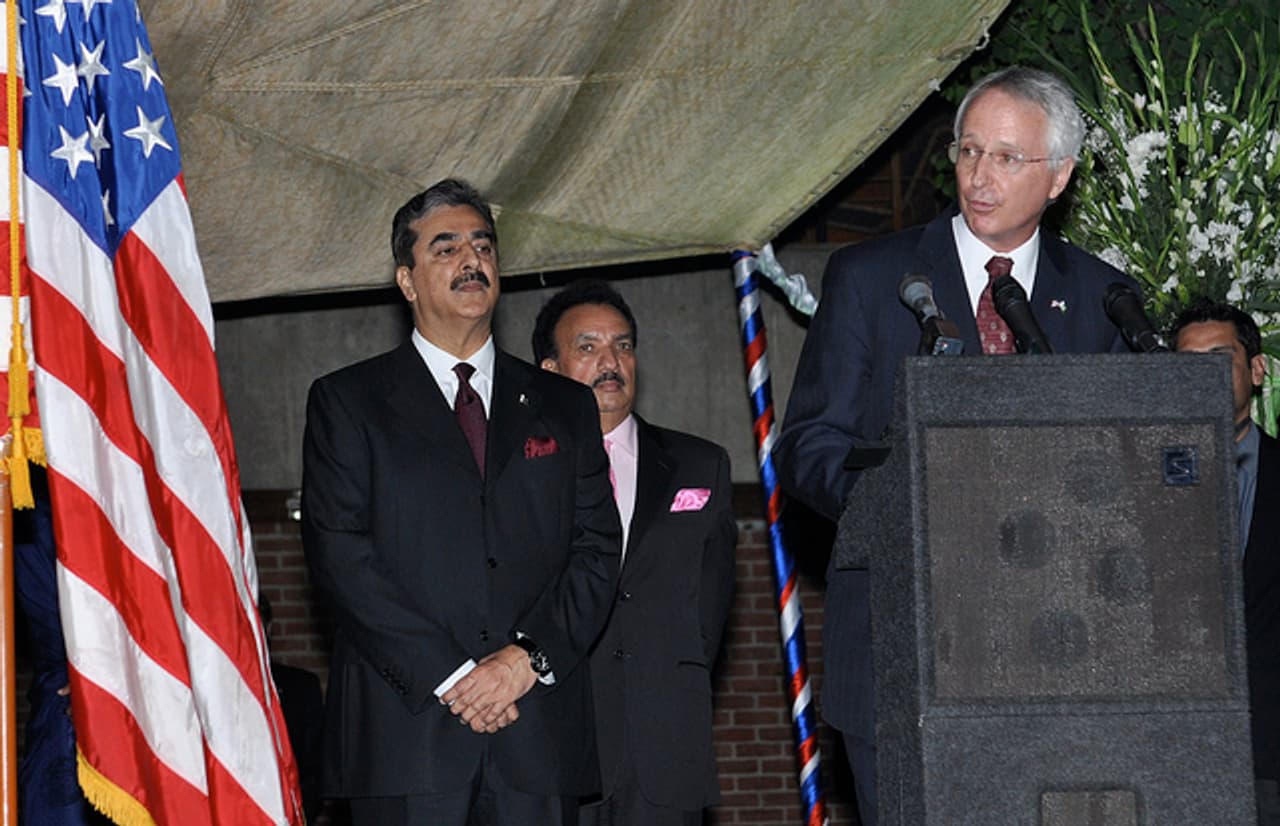
Analysis: Washington – a new front in drone wars?
Ambassador Munter with Pakistan Prime Minister Gilani
Details have emerged of a major turf war in Washington DC between the CIA and the US State Department. Government officials are now talking semi-publicly about whether CIA drone attacks in Pakistan might at times be causing more harm than good.
As the Bureau recently reported, the CIA’s station chief in Islamabad has just stepped down after only seven months in post. This was ostensibly for health reasons.
But, according to a new investigation by the Associated Press, this might not be the entire story. The investigation reveals that significant friction existed between the US Ambassador to Pakistan, Cameron Munter, and the ‘hard charging’ former CIA station chief, who as a serving field officer has not been publicly named. The two reportedly took part in closed-door shouting matches.
Barack Obama came to office promising to take the war on terror to Pakistan’s tribal areas. And the CIA’s strikes have rained down on average once every four days during his presidency, with the Bureau logging some 234 attacks
The departing chief is also said to have had an ‘extremely tense’ relationship with his Pakistani Intelligence (ISI) counterparts, including Director General Ahmad Shuja Pasha.
For more analysis on the CIA drone war in Pakistan click here
Drone strikes questioned
The CIA runs a ‘secret’ drone war inside Pakistan, aimed at militants perceived as a threat to the US. But now senior officials in the State Department – responsible for US diplomacy worldwide – are questioning whether some of those attacks actually serve America’s best interests.
On March 17, AP reports, Ambassador Munter personally attempted to halt an imminent drone strike which he thought might ‘set back Washington’s already shaky relations with Islamabad’, according to a senior US source. Only the day before, CIA contractor Raymond Davis had been released, despite a public outcry in Pakistan. Munter’s objections were reportedly personally overruled by then-CIA chief Leon Panetta. The strike ‘was in retaliation for Davis. The CIA was angry,’ AP’s source claims.

Details of Munter’s objection to the attack may be somewhat self-serving. That March 17 strike proved disastrous, killing as many as 40 people, most of them civilians. The Bureau recently identified by name 19 of the civilians killed, including tribal elders and policemen. The CIA continues to deny it has killed any non-combatants since August 23 2010.
AP’s investigation – very much told from a State Department perspective – claims that similar problematic CIA strikes undermined US diplomatic efforts in April and May of this year. Secretary of State Hillary Clinton is said to have ‘weighed in’ on at least one occasion.
Regaining the diplomatic initiative
The current intervention suggests that the State Department is trying to regain the diplomatic initiative. Barack Obama came to office promising to take the war on terror to Pakistan’s tribal areas. And the CIA’s strikes have rained down on average once every four days during his presidency, with the Bureau logging some 234 attacks.
For the last 18 months little opposition to this approach has been heard within the administration. Dennis Blair, the former US Director of National Intelligence who was ousted last year, remains a rare voice against the drones campaign. The mainstream US media and think-tanks have also barely challenged the strategy.
With US-Pakistani diplomatic relations now on the floor, the State Department may simply be exploiting a power vacuum to gain some policy leverage. Leon Panetta has left the CIA, taking over as Defense Secretary. General David Petraeus has yet to formally succeed him. The present conflict might represent a skirmish for advantage, rather than a full-blown war.
The Bureau’s major assessment of CIA drone strikes in Pakistan is an ongoing project. If you would like to be kept informed on this issue click here to sign up to our newsletter.


